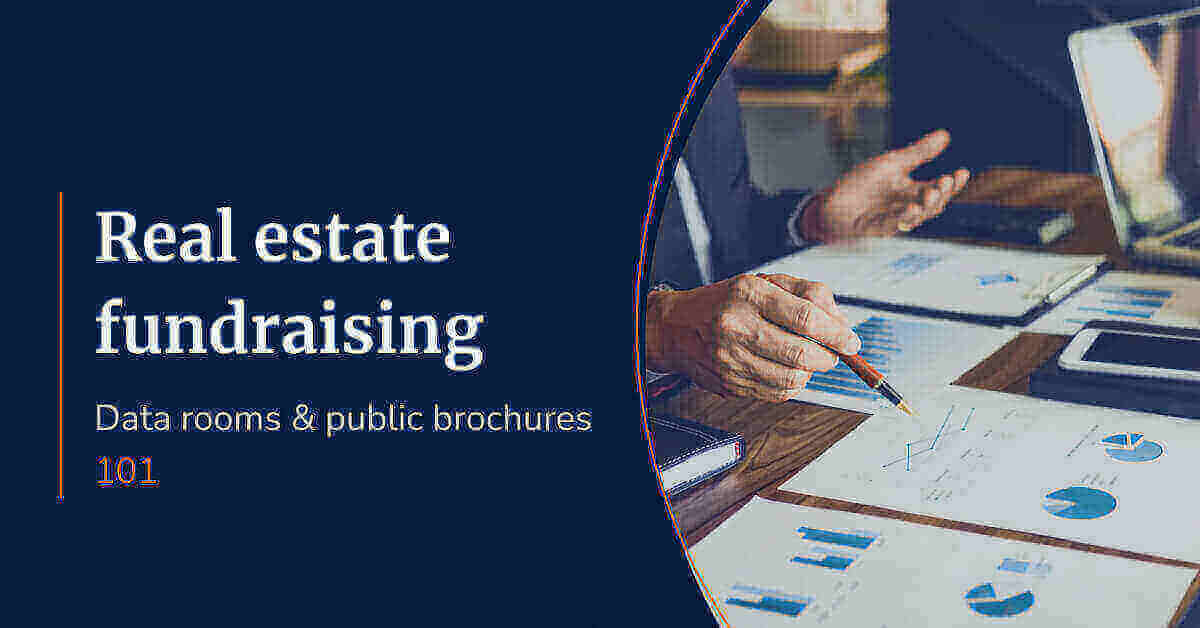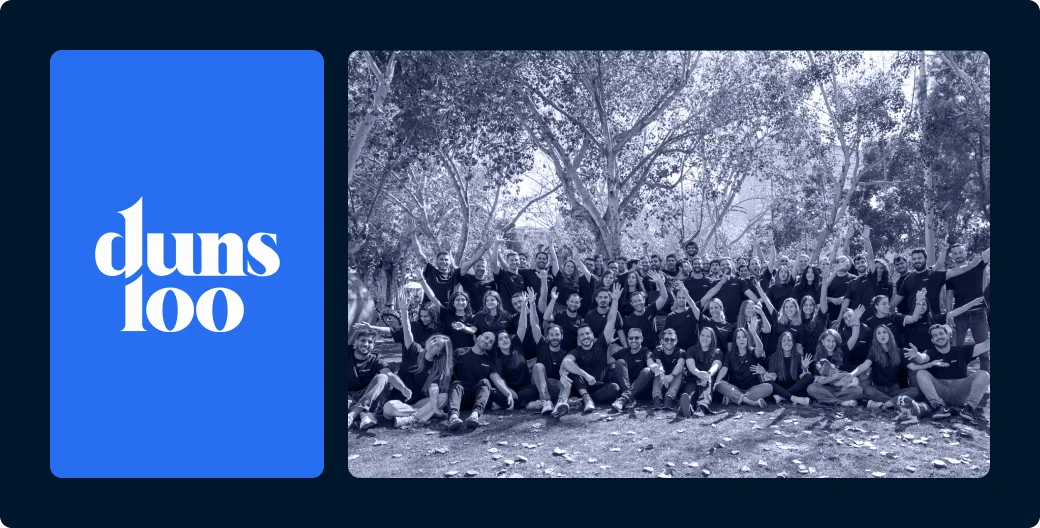Securing funds from investors is a critical part of the deal process, as it is complex. Capital raising is the lifeblood of any commercial real estate deal.
Let’s break down the central tenets of a successful capital-raising process for a GP or a syndicator:
Transparency and easy data access for the investors.
Effective lead management and investor onboarding.
Ability to easily create compelling and engaging marketing materials and public brochures.
Overview and analytic tools to track the capital raising process.
In this article, we’ll focus on two essential tools of the capital-raising process: Data rooms and public brochures. We’ll learn how to make the most out of them and what to look for when choosing the tool to create and manage them.
Data rooms
A data room is an essential tool to enable potential investors to review the information and terms of the offering.
What are real estate data rooms?
Data rooms are online platforms, folders, drives, or any other tool that concentrates the deal information for investors. Data rooms can be public (i.e., open to any potential investors) or private and secured, so only those with permission can view the information.
Effective and transparent information in the data room will incentivize investors to commit to the offering.
The data should also be presented in an engaging, clear, and aesthetically pleasing way. GPs should take the time to build their data room, as it’s one of the most prominent opportunities they have to make a strong impression and convince of the attractivity of the asset.
Such information should include the following:
- A concise yet engaging description of the asset or investment: Address all the essential details, such as asset type, size, location, area map, investment potential, design, designation, anchor tenants, etc.
- High-quality photos and videos of the asset and its surrounding: Some firms even started integrating virtual tours into their data rooms to provide more information to prospective investors.
- Relevant documents: Appraisals and surveys, PPM, operating agreements, and any related agreements that could help the investors assess the investment financially and legally.
- Investment metrics and other details: IRR, COC, yield, the raise target, and closing date
What makes a good data room tool?
Data rooms can be as basic as a Google drive or a Dropbox folder where the GP drops the documents and information.
On the other hand, data rooms can be advanced platforms designed to edit, import, and engagingly present information to prospective investors. So what makes a good data room?
- Easy user interface – the ability to edit information, upload documents, and fill out forms from a convenient template.
- Beautiful display – the Data room’s design and visibility are an inseparable part of the firm’s brand and should look professional.
- Multimedia capabilities – the ability to add and display photos, videos, and live area maps.
- Administrator capabilities – controlling the data uploading process, security, and visibility to investors.
- Integration – It’s essential to be able to display the data room as part of the offering on the Investor Portal of the investors you want to market the offering to, so they can access it directly from their own Investor Portal.

Public brochures
Public brochures serve a similar purpose to those of data rooms in that they’re used to bring deal information to prospective investors. But they differ from data rooms in serving investors’ intent and the scope of the information they deliver.
What are real estate public brochures?
Public brochures are marketing papers that are intended to garner interest from prospective investors and collect reservations and soft commitments.
They differ from data rooms in that brochures are usually lighter marketing documents, highlighting only the offering’s main features, advantages, and metrics, and aren’t intended to convey all the relevant information.
You may refer to a brochure as a “prequel” to the data room, where the investors will get the complete overview necessary for them to make a hard commitment.

What makes a good real estate brochure?
Most essentially, a brochure should be a straightforward, aesthetically pleasing document that a prospective investor can review, get an initial idea of an offering, and decide if they want to learn more or even make a soft commitment.
A great brochure will be more than a mere “PDF” doc. It will be an online document that’s:
- Easily sharable through a link.
- Interactive – the user can click photos, play videos, scroll through an interactive map, and download documents.
- Easy to engage from, with an integrated “soft commitment” that’s linkable to an inbound lead form.
What’s the best way to create a public brochure?
The best way to create a public brochure is to use the information already uploaded in the data room and extract the information from there.
There’s no reason to create a brochure from scratch and do double work when you already have everything in your data room.
So when you’re looking for a brochure-generating tool, here are the main capabilities and features to look for:
- Easy-to-generate – you should be able to click to select the sections of the data rooms you want to present in the brochure.
- A customizable “drive to action” button – you can add a clickable button and edit its label to suit your purpose.
- A customizable inbound lead form – you can link the button so that the investor is prompted to fill out the form. You should be able to have full control over the fields of the inbound form.
- Investor portal integration – It’s essential to be able to display the brochure on your investors’ Portal. You can toggle the visibility of the brochure on your investors’ Portal.
- Sharable – you should be able to generate a sharable link, which you can send directly to leads via email or share on social media.

Generating a brochure with Agora
How to find the best tools to create data rooms and brochures?
There’s a variety of tools to help you create data rooms, brochures, and other supporting materials for your capital-raising process. When doing your research, consider the following questions:
- Is it specifically designed for real estate investments?
- How easy is it to use?
- How much customization does it offer?
- Is it part of a more extensive fundraising enablement toolkit, together with the creation of subscription flows, lead management, and analytics?
Would you like to learn more about Agora’s powerful fundraising enablement tools, including fully customizable data rooms, public brochures and subscription flows?











